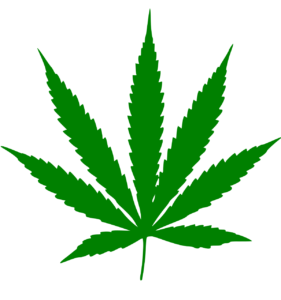 Many people have noticed that marijuana (cannabis) has gotten stronger over the past decades, and now a study agrees. The THC in marijuana is what gives a person a "high", and those levels have really increased since 1970. That means what was smoked at Woodstock back in1969 was much milder than what is being smoked today.
Many people have noticed that marijuana (cannabis) has gotten stronger over the past decades, and now a study agrees. The THC in marijuana is what gives a person a "high", and those levels have really increased since 1970. That means what was smoked at Woodstock back in1969 was much milder than what is being smoked today.
An international group of researchers reviewed studies of THC and CBD concentrations in cannabis from 7 countries for the past 50 years. They found that THC (delta‐9‐tetrahydrocannabinol) concentrations increased steadily over the years, but the cannabidiol (CBD) concentrations remained stable. They attribute this to high-THC strains of cannabis being sold nowadays.
The researchers point out that studies show that: "Human laboratory studies show that THC administration causes dose‐dependent increases in intoxication, cognitive impairment, anxiety and psychotic‐like symptoms." Which means - be careful when smoking marijuana! It's strong!
By the way, there are many terms used to describe cannabis or marijuana nowadays, including weed, pot, and chronic.
From Science Daily: Cannabis strength soars over past half century
New research shows that over the past 50 years street cannabis across the world has become substantially stronger carrying an increased risk of harm.
The team behind the study from the Addiction and Mental Health Group at the University of Bath, synthesized data from over 80,000 cannabis samples tested in the past 50 years from street samples collected in the USA, UK, Netherlands, France, Denmark, Italy and New Zealand. Their findings are published in the journal Addiction and the research was funded by the Society for the Study of Addiction.
The researchers investigated how concentrations of THC (the intoxicating component of cannabis responsible for giving users a 'high') had changed over time in different types of cannabis. In herbal cannabis, they found that THC concentrations increased by 14% from 1970 to 2017. This was primarily due to a rising market share of stronger varieties such as sinsemilla relative to traditional herbal cannabis which contains seeds and less THC.
The team have previously found consistent evidence that frequent use of cannabis with higher levels of THC carries an increased risk of problems such as addiction and psychotic disorders.
The researchers found that the increases in THC were particularly high for cannabis resin, with THC concentrations rising by 24% between 1975 and 2017. Cannabis resin is extracted from herbal cannabis and is now typically stronger than herbal cannabis according to the findings.
They also looked at concentrations of cannabidiol or CBD, which is not intoxicating but may have potential medical uses such as helping people to quit cannabis. In contrast to THC, they found no evidence for changes in CBD in cannabis over time.
Study co-author Sam Craft also from the Addiction and Mental Health Group at the University of Bath explained: "Cannabis resin -- or 'hash' -- is often seen as a safer type of cannabis, but our findings show that it is now stronger than herbal cannabis. Traditionally, cannabis resin contained much lower amounts of THC with equal quantities of CBD, however CBD concentrations have remained stable as THC has risen substantially, meaning it is now much more harmful than it was many years ago."
The researchers argue that increases in cannabis strength highlight the need to implement wider strategies for harm reduction similar to those used for alcohol -- such as standard units and public guidelines on safer consumption limits.
